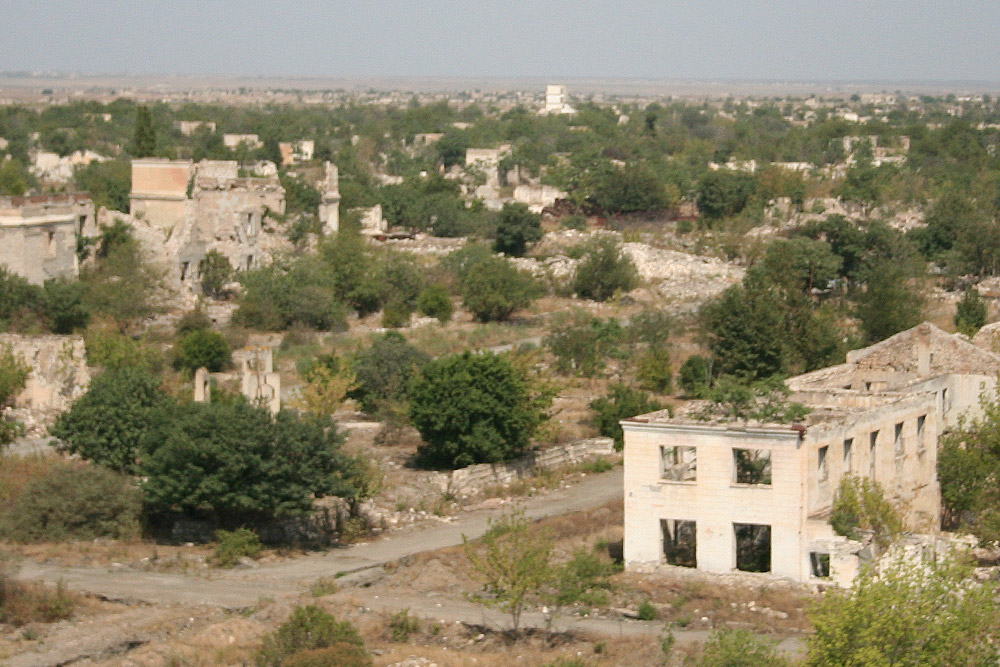OSCE MG becomes active in Karabakh negotiations

By Rashid Shirinov
The OSCE Minsk Group that is mediating the peace diplomacy over the Armenian-Azerbaijani Nagorno-Karabakh conflict has recently demonstrated a noticeable intensification in the negotiation process.
Farhad Ibrahimov, expert of Primakov National Research Institute of World Economy & International Relations, hails such a positive trend observed in the activities of the mediators, who were subject of criticism for a long time due to lack of any tangible result in the conflict resolution.
Ibrahimov told Day.Az on December 13 international mediators
began to declare increasingly that the territory of
Nagorno-Karabakh indeed belongs to Azerbaijan, as well as the need
to resolve the conflict in accordance with the UN Security
Council’s resolutions.
“The reality is that during its existence, the OSCE Minsk Group has
not made due efforts to achieve certain goals, and this is one of
the reasons that today the problem remains unresolved and the
situation on the line of fire is tense,” said Ibrahimov, adding
that the increased activity of international mediators is now
reduced to a mutual desire of the parties to resolve the issue so
that there are no losers or winners.
The four resolutions (822, 853, 874, 884), adopted in 1993,
condemned the occupation of Azerbaijani territories, stressed the
unacceptability of forcible appropriation of territory, confirmed
the inviolability of the territorial integrity, sovereignty and
borders of Azerbaijan and demanded the immediate, complete and
unconditional withdrawal of Armenian occupation forces from
Azerbaijani lands. However, these demands are still on paper, as
Armenia refuses to comply with the decision of the UN Security
Council.
The expert expects progress in resolving the conflict, given a certain activity of the OSCE Minsk Group, as evidenced by the past meeting of Azerbaijani and Armenian presidents in Geneva, where the parties agreed to take measures to intensify the decisions on the conflict.
“The military solution to the conflict is undesirable, as it can lead to unpredictable consequences, added Ibrahimov. “This is why the OSCE Minsk Group will intensify its activities so that the next hotbed of tension does not erupt.”
He also noted that the threat of renewed hostilities is real, and the Armenian side, which is still demonstrating a stubborn and aggressive policy against Azerbaijan, must understand and realize this truth.
The Nagorno-Karabakh conflict began in 1988 when Armenia made territorial claims against Azerbaijan. As a result of the ensuing war, in 1992 Armenian armed forces occupied 20 percent of Azerbaijan, including the Nagorno-Karabakh region and seven surrounding regions. More than 20,000 Azerbaijanis were killed and over 1 million were displaced as a result of the large-scale hostilities. The 1994 ceasefire agreement was followed by peace negotiations. For more than 20 years, Russia, the U.S. and France, who are co-chairs of the OSCE Minsk Group, have been trying to broker a peace to the Armenian-Azerbaijani conflict.
---
Rashid Shirinov is AzerNews’ staff journalist, follow him on Twitter: @RashidShirinov
Follow us on Twitter @AzerNewsAz
Here we are to serve you with news right now. It does not cost much, but worth your attention.
Choose to support open, independent, quality journalism and subscribe on a monthly basis.
By subscribing to our online newspaper, you can have full digital access to all news, analysis, and much more.
You can also follow AzerNEWS on Twitter @AzerNewsAz or Facebook @AzerNewsNewspaper
Thank you!
